We all need to make a lot of decisions by choosing and ranking items/options on a daily bases. Sometimes it looks easy but often takes a long time to make the decision. It is not easy to choose one option out of several. It seems paradoxical, but our decision is typically driven by trying to avoid a mistake rather than searching for a bigger benefit. We are more afraid of making a mistake than to not get what we need.
Our fear of losing is stronger than the desire to acquire.
The difficulty of decision-making depends on the chance of making a mistake or on the expected severity of the mistake. In the case of low expected severity, we do not care. In this case, we make a decision fast and without hesitation. If we feel that our wrong decision may result in dramatic circumstances, we typically wait before making the decision honestly believing that the delay will help us to avoid the mistake; or, at least, reduce its severity.
The chart below shows contingent dependence of time to make a decision (TIME TO DECISION – TTD) on the severity of the possible circumstances in the case of a wrong decision (EXPECTED SEVERITY of MISTAKE – ESM):
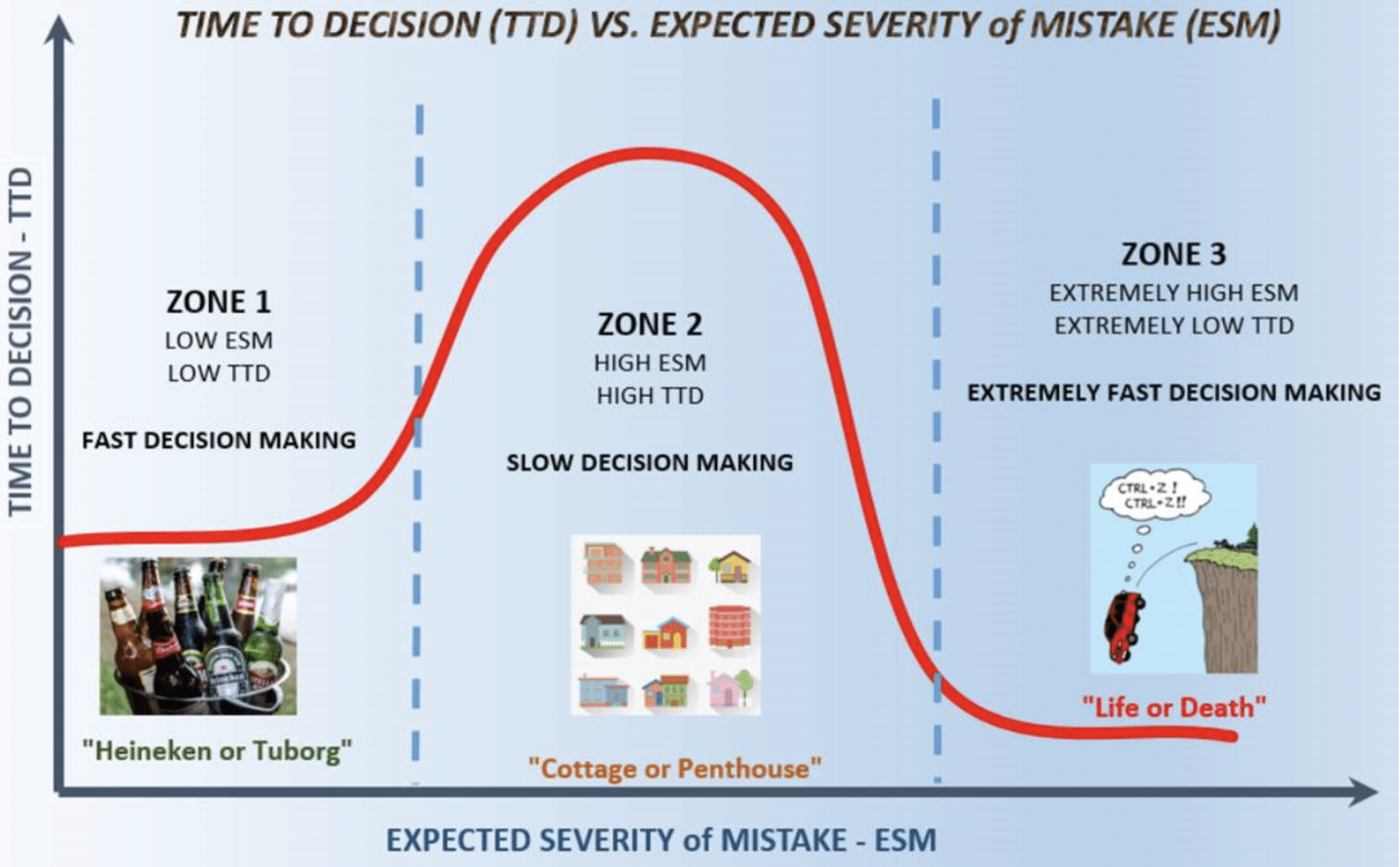
Low ESM, the decision is not critical. Both beers are excellent. A wrong decision will not impact our lives dramatically.
In such situations, a decision is made relatively fast. TTD is low.
Zone 1 covers an activity that is insignificantly impacting our life and career including our regular day-to-day operations such as purchasing food and clothes, choosing vacation time and destination, choosing gifs, choosing a car and so on.
High ESM, the decision becomes critical. A wrong decision could dramatically impact our entire life, career or result in high costs.
In these cases, the decision typically takes a long time or even a very long time to achieve. TTD is high.
People usually believe that delayed decision could prevent them from choosing the wrong option. They typically simply wait rather than use instruments for reasonable prioritization of available options.
Zone 2 covers an activity that significantly impacts our budget, health, career, education, development and so on. It also applies industry-specific cases, such as choosing relevant options for a process, an equipment troubleshooting, a process performance improvement or cost reduction.
Extremely high ESM, the decision becomes critical and may lethally impact our lives.
In these extreme situations, people must make rapid decisions. TTD is very low.
Zone 3 covers life-threatening circumstances such as collisions, catastrophes, car crashes, natural disasters, floods and so on.
When this happens, people must react immediately and have no time to think about their decision. Unfortunately, these decisions are not always the best; people jump out the windows of burning houses, drive off the cliff to avoid collisions and ultimately leaving no chance to stay alive.
Let’s leave Zone 3 aside since in this context people make decisions subconsciously and we cannot attribute it to a category of problem-solving discipline.
Situations falling under Zone 1 and Zone 2 require choosing between different options to make a decision. In both cases, we may make a poor decision and unnecessary waste time for “the thinking”. An ability to make a choice out of several items or options helps us to find the best one, but it also creates a problem of how to make the choice.
Comparison of items or options and decision making is a problem-solving process that should be managed with the help of problem-solving tools – Inventive Thinking Tools.
We offer a Round Robin Ranking (RRR) tool that is based on the following concept:
A human being is not capable of comparing more than two things at a time. We can adequately choose between two things only.
When we have to choose one of the five options: Option 1, Option 2, Option 3, Option 4, Option 5 we can compare the options in pairs using Round Robin Matrix:
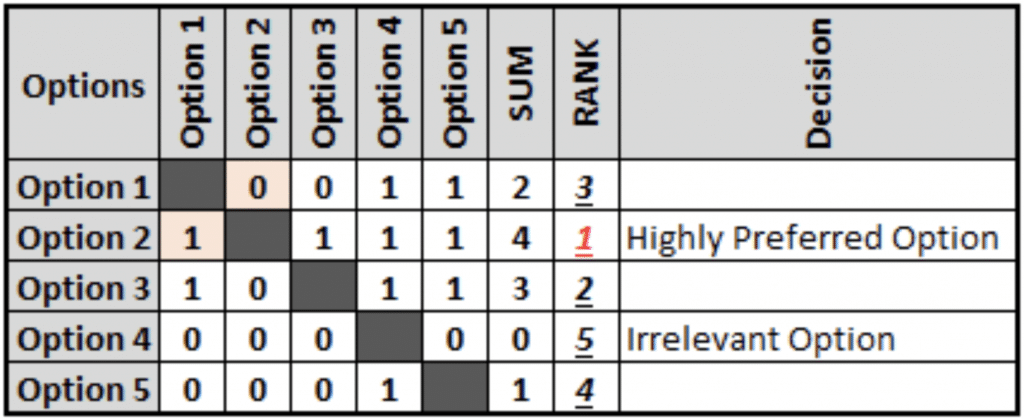
This matrix allows easy comparison of one item against the others in pairs. In the hypothetical example above the comparison of Option1 and Option2 shows that Option2 is the winner. Therefore Option1 against Option2 received a score of “0” while Option2 against Option 1 received a score of “1” (highlighted in the table). All the options should be compared with one another in pairs. Score “1” is assigned to the winner option and score “0” is assigned to the losing option. Summarized score defines the rank of an option. The higher the sum of scores the higher the rank.
You don’t have to create any matrix to make the comparison, it is much easier to use RRR tool provided in PRIZ Guru Platform.
Project title: Reduce household expenses
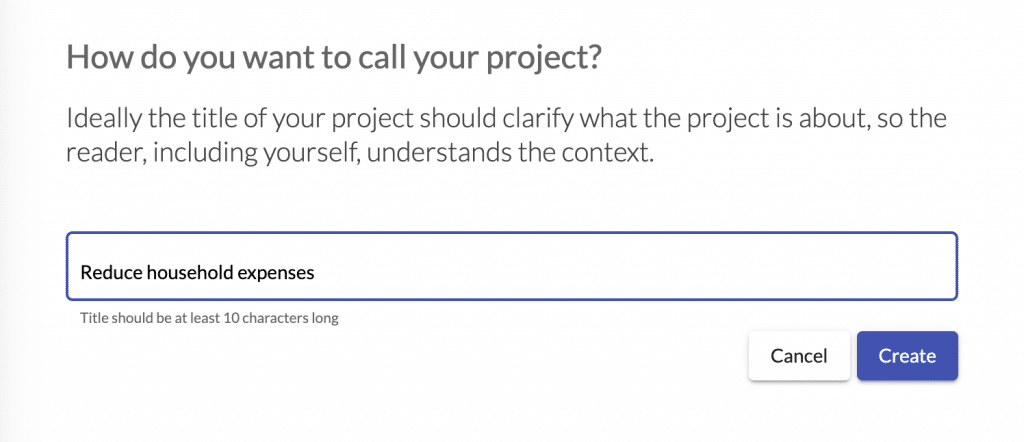
Project Details:
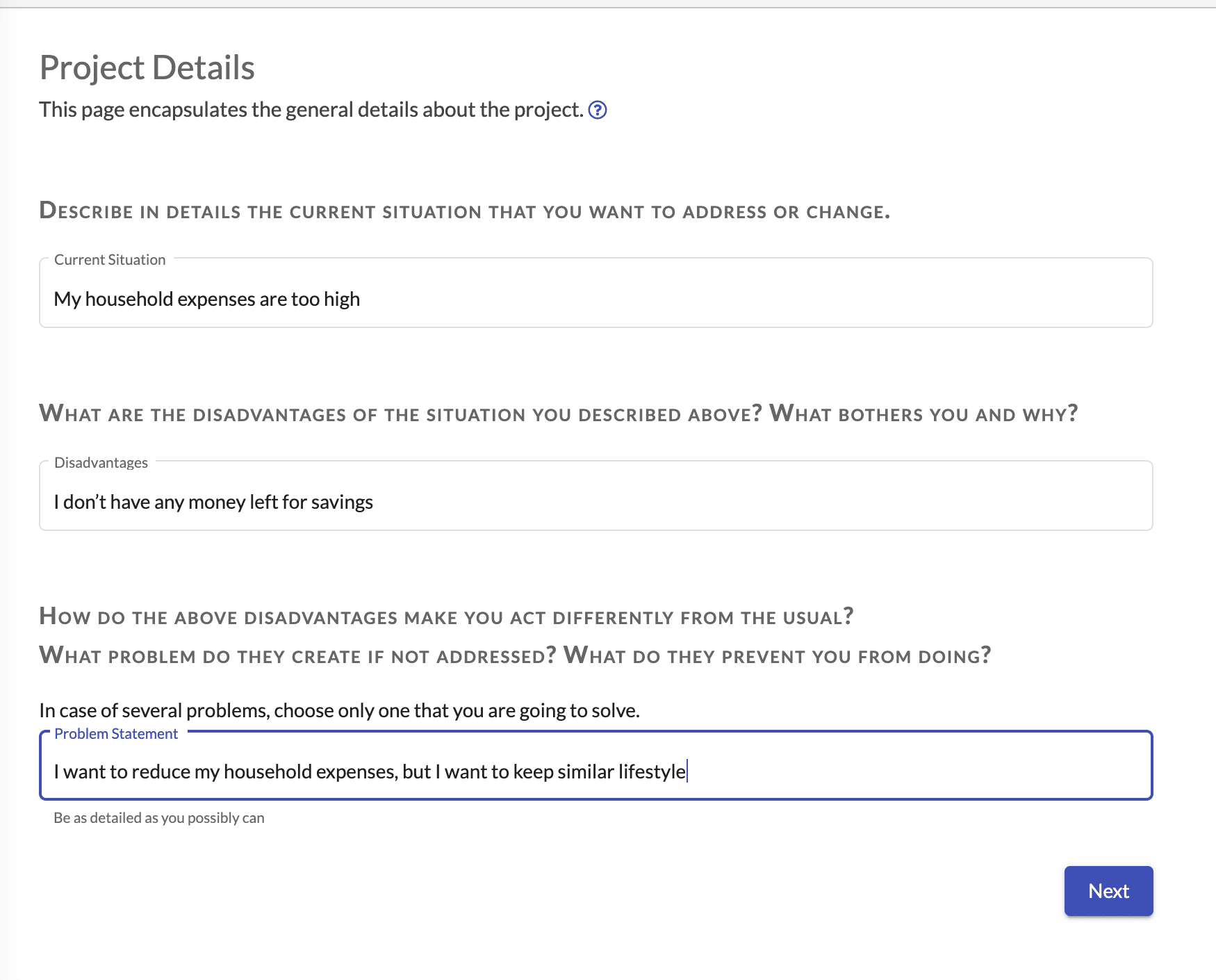
List of options for this example:
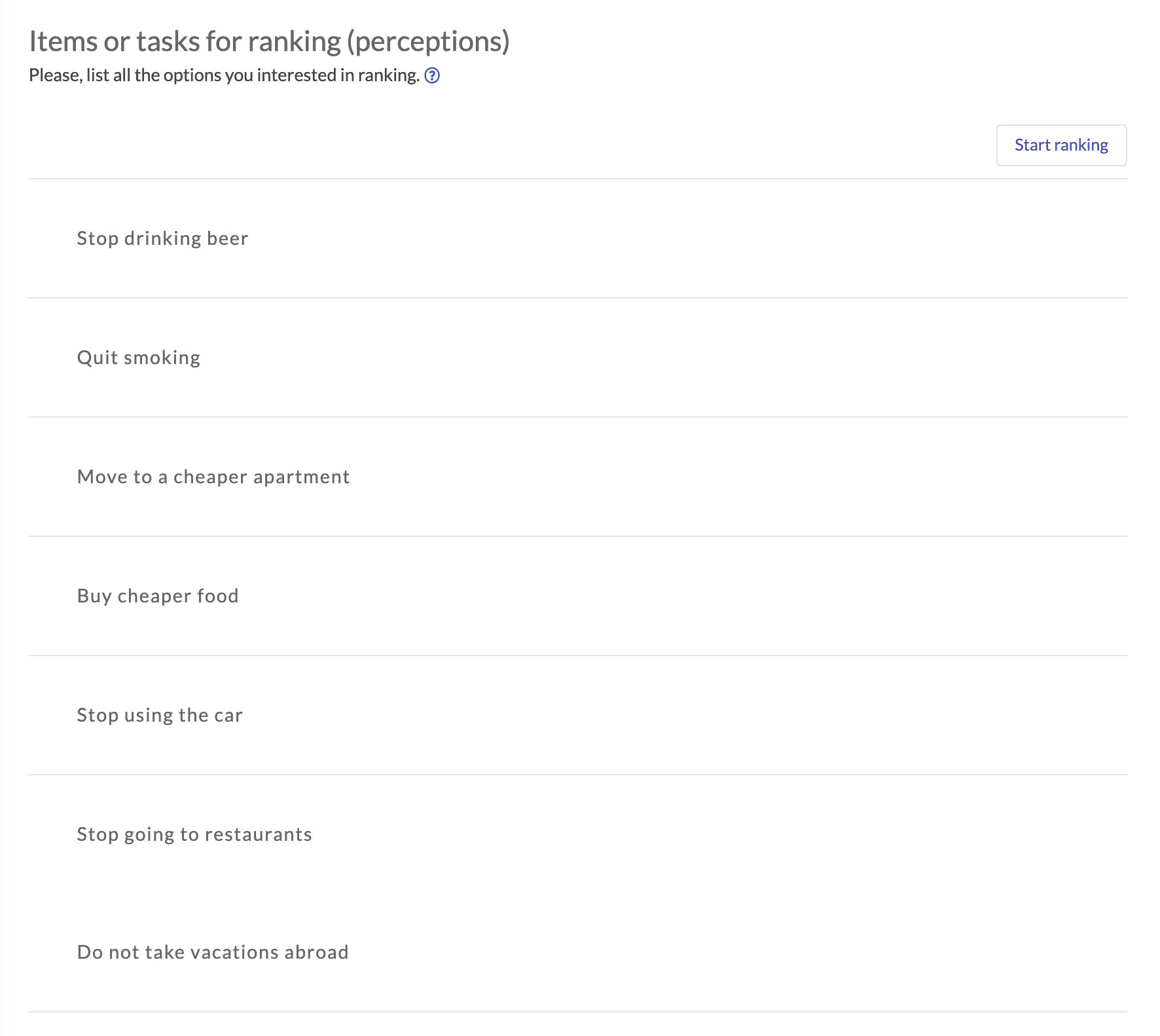
As a result of ranking, we’ve got the following results:
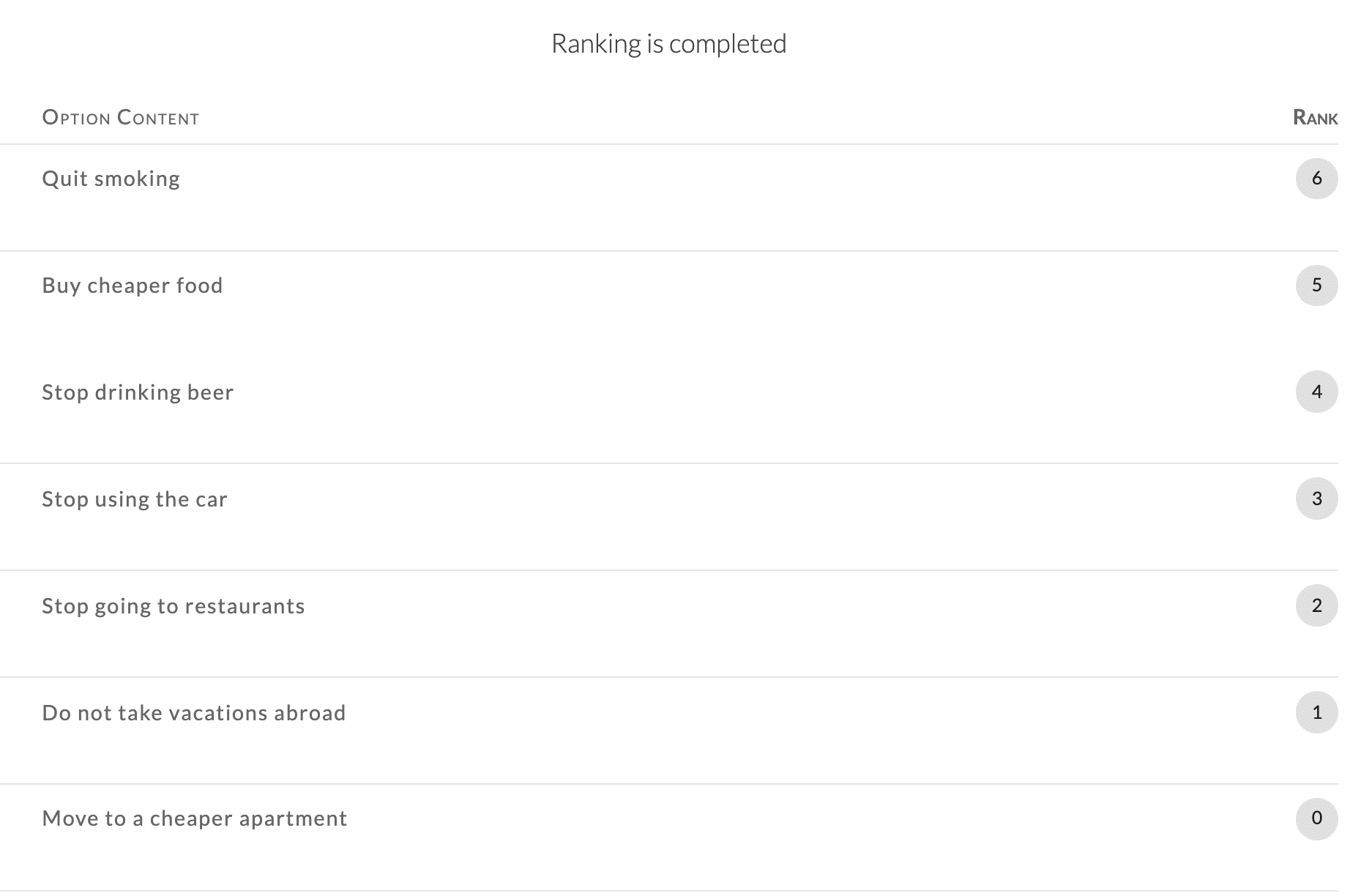
To reduce household expenses, we are ready to quit smoking and buy cheaper food, but we completely disagree with moving to a cheaper apartment or stop traveling.
This is just an entertaining example. Try something simple to get started, and to get the feel of RRR tool’s strength.
You can successfully use the RRR tool at work.
For instance, some equipment specific parameter is suddenly got out of spec. RRR tool will help you to manage the priority of the actions for troubleshooting. The list of the Options could be, check and adjust:
Try ranking the options of the process or equipment troubleshooting and you will see how RRR will improve your decision-making efficiency.
Use PRIZ Guru ONLINE PLATFORM for ranking and decisions making.
for ranking of options and making decision.
LOGIN to PRIZ Innovation Platform and start your project.
Amos Redlich
May 1, 2019
The advantage of the RRR model is in its simplicity of both understanding the model and using it. But it has a bold disadvantage. It gives all the same importance to all options.
Thomas L. Saaty’s model is very similar to the RRR model but is more hierarchical. Saaty model suggests first ranking the options by assigning a weight to each option. Only then ranking the options. This hierarchical approach suggests a more balanced decision, which fits large organizations, where a few stakeholders are involved in the decision, each may give different weight to the options.
Amos Redlich,
Innovation workshops
http://www.rankup.co.il
Anatoly
May 1, 2019
Amos, many thanks for your comment. We just started with the most trivial approach. Nevertheless, it is really working, I know a lot of examples where RRR was very successfully used for troubleshooting of both equipment and process. So, let’s start with the easy technique.